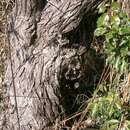en
names in breadcrumbs


Salix pierotii, the Korean willow, is a species of willow native to northeast China, far eastern Russia, the Korean peninsula and Japan.[2] They are shrubs or trees reaching 8 m. Because their twisted wood is not good for timber or making tools, in Japan Salix pierotii trees are used to demarcate property lines between farms.[3]
One form is currently accepted:[2]
Salix pierotii, the Korean willow, is a species of willow native to northeast China, far eastern Russia, the Korean peninsula and Japan. They are shrubs or trees reaching 8 m. Because their twisted wood is not good for timber or making tools, in Japan Salix pierotii trees are used to demarcate property lines between farms.